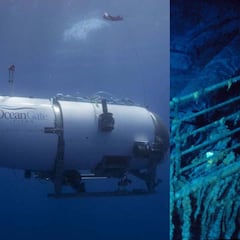Study reveals what caused the tragic Titan implosion and why it was avoidable
Researchers from the University of Houston provided information of the reasons behind the damage of the OceanGate submarine.

In June 2023, an ambitious plan aimed to descend into the depths of the Atlantic Ocean to closely observe the remains of the Titanic. A journey planned by the company OceanGate tragically concluded with the implosion of the Titan submarine.

What caused the Titan implosion?
The marine vehicle was carrying five individuals – Hamish Harding, Paul-Henri Nargeolet, Shahzada Dawood, Suleman Dawood, and Stockton Rush (OceanGate CEO) – who lost their lives when a catastrophic implosion occurred as it descended to view the remains of the famous transatlantic liner. Almost two years has passed since then, and hypotheses regarding the incident have continued to emerge. Now, a new study published in the journal Proceedings of the National Academy of Sciences (PNAS) provides fresh insights into the tragedy.
According to a team of researchers from the University of Houston, various microscopic imperfections in the submarine’s hull could have been the root cause of the events that unfolded on board the vessel.
“The integrity of the submarine may have been compromised by damage to the material used for its hull, which accumulated during the numerous journeys it undertook prior to the collapse,” notes Roberto Ballarini, lead researcher and professor of civil and environmental engineering.

Titan’s damaged carbon fiber hull
Related stories

Remembering the five aboard the Titan submersible

The cost of the Titan search
Thus, the wear and tear accumulated over time contributed to the tragedy in the depths of the Atlantic. The material employed, a composite of carbon fiber, suffered from previous incursions of the Titan. “It is well known that under compression loads, the fibers of such composites are susceptible to microbuckling and may delaminate from the surrounding matrix,” he adds.
According to experts, the hull of the Titan may have suffered damage under extreme compression pressures during past incursions. This could have significantly diminished its rigidity and strength. “Along with the inevitable geometric imperfections introduced during its manufacturing, these factors could have contributed to its buckling, inducing implosion.”

Complete your personal details to comment